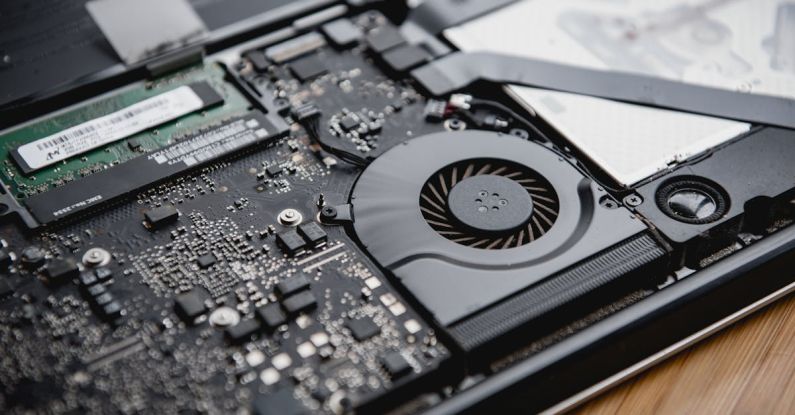Choosing the Right Radiator for Liquid Cooling
Liquid cooling has become a popular choice among PC enthusiasts and gamers who want to keep their systems running smoothly and efficiently. One of the key components of a liquid cooling system is the radiator, which plays a crucial role in dissipating heat from the coolant. Choosing the right radiator for your liquid cooling setup is essential to ensure optimal performance and temperature regulation. In this guide, we will explore the factors to consider when selecting a radiator for liquid cooling.
Understanding Radiator Sizes and Compatibility
Radiator size is an important consideration when choosing a liquid cooling system for your PC. Radiators come in various sizes, typically measured in millimeters, such as 120mm, 240mm, 360mm, and 480mm. The size of the radiator will determine how much heat it can dissipate, with larger radiators capable of handling higher thermal loads.
Before purchasing a radiator, it is crucial to ensure compatibility with your PC case. Check the dimensions of the radiator to make sure it fits inside your case without obstructing other components. Some cases may only support certain radiator sizes, so be sure to double-check before making a purchase.
Deciding on Radiator Thickness
In addition to size, radiator thickness is another factor to consider. Thicker radiators typically have more surface area for heat dissipation, making them more efficient at cooling the coolant. However, thicker radiators may require more space inside the case and can be heavier, so it’s essential to balance performance with practicality.
Thinner radiators are suitable for smaller cases or setups with space constraints. They may not offer the same cooling capacity as thicker radiators but can still provide adequate cooling performance for most systems. Consider your case size and cooling requirements when deciding on radiator thickness.
Choosing the Right Material
Radiator materials can impact performance, durability, and maintenance requirements. The most common materials used in radiators are aluminum and copper. Copper radiators are known for their excellent heat transfer properties, making them a popular choice for high-performance systems. However, copper radiators tend to be more expensive than aluminum ones.
Aluminum radiators are lightweight and cost-effective, making them a practical choice for budget builds or casual users. While aluminum radiators may not offer the same level of heat transfer as copper, they can still provide sufficient cooling for most setups. Consider your budget and cooling needs when selecting the material for your radiator.
Opting for Fan Configuration
The number and type of fans mounted on the radiator can significantly impact cooling performance. Fans come in various sizes, speeds, and designs, such as static pressure fans and airflow fans. Static pressure fans are ideal for pushing air through dense radiator fins, while airflow fans are better suited for unrestricted airflow.
When choosing fans for your radiator, consider factors such as noise levels, airflow capacity, and static pressure. Opt for high-quality fans from reputable brands to ensure reliable performance and longevity. Additionally, consider the fan placement and orientation to maximize airflow and cooling efficiency.
Considering Radiator Fin Density
Radiator fin density refers to the number of fins per inch on the radiator core. Higher fin density radiators have more fins, providing a larger surface area for heat dissipation. While high fin density radiators can offer excellent cooling performance, they may require more powerful fans to maintain airflow.
Lower fin density radiators are easier to clean and less prone to dust buildup, making them a low-maintenance option for liquid cooling systems. Consider your cooling requirements and airflow setup when choosing the fin density for your radiator. Balancing fin density with fan performance is key to achieving optimal cooling efficiency.
Selecting the Right Fittings and Tubing
When installing a radiator in a liquid cooling loop, it is essential to consider the fittings and tubing used to connect the components. Ensure that the fittings are compatible with the radiator and other water cooling parts to prevent leaks and ensure a secure connection. Choose tubing that is the appropriate size and material for your setup to avoid kinks or restrictions in the flow of coolant.
Consider factors such as flexibility, durability, and aesthetics when selecting fittings and tubing for your liquid cooling system. Opt for high-quality materials and fittings from trusted manufacturers to prevent leaks and ensure a reliable connection. Proper installation and maintenance of fittings and tubing are crucial for the longevity and performance of your liquid cooling setup.
Conclusion: Making an Informed Decision
Choosing the right radiator for liquid cooling involves considering various factors such as size, thickness, material, fan configuration, fin density, and fittings. By understanding these key aspects and their impact on cooling performance, you can make an informed decision that meets your system’s requirements and budget.
When selecting a radiator, prioritize compatibility with your case, cooling efficiency, and long-term maintenance. Invest in high-quality components from reputable brands to ensure reliable performance and optimal heat dissipation. By carefully evaluating your needs and preferences, you can build a liquid cooling system that keeps your PC running cool and quiet under heavy loads.






